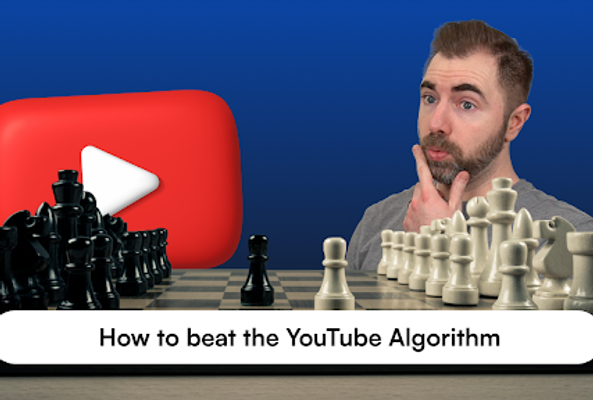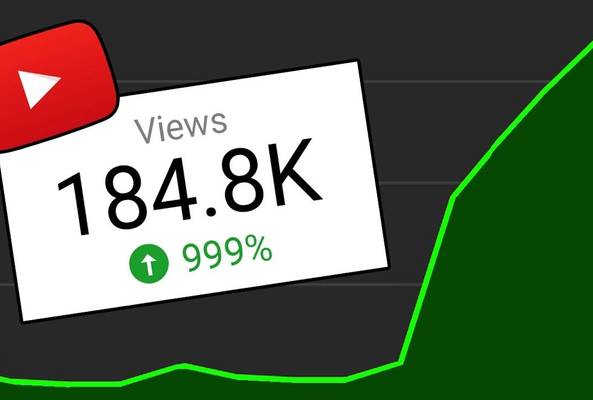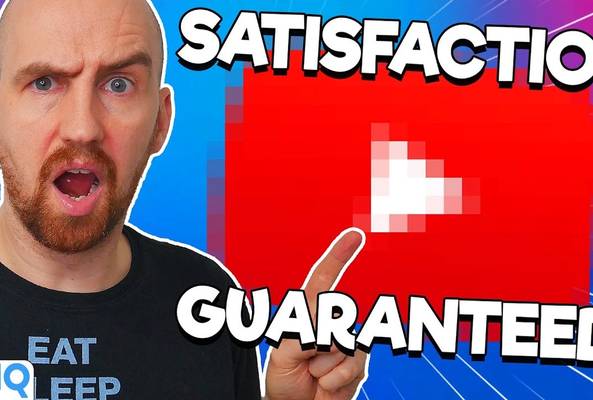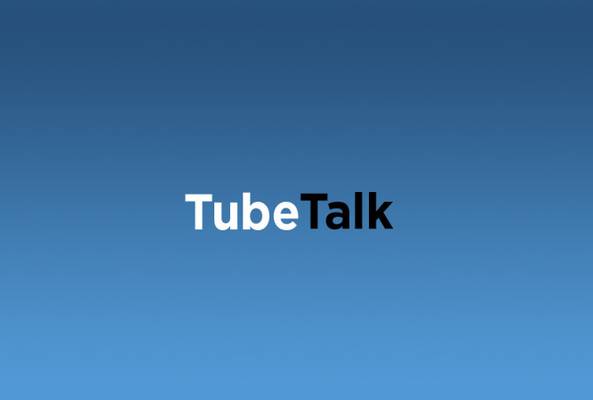In addition to being an avid movie and gaming enthusiast, Uttaran Samaddar is an experienced writer who has lent his creativity and unique perspective to various publications. He loves hearing and telling stories.
How the YouTube Algorithm Works in 2026: Updates & Tips
The YouTube algorithm exists to match viewers with the perfect video for their search, their interests, and their moment. Master how it works, and you control who sees your content.
Every minute, creators upload 500+ hours of video to YouTube. The algorithm's single job is to predict which videos will keep each viewer watching, clicking, and coming back for more.
Master this system, and you control your growth. Ignore it, and you're hoping for luck.
Stop Guessing. Start Growing.
Join 20M+ creators using vidIQ to get more views, subscribers, and success on YouTube.
Here's exactly how the YouTube Algorithm decides what to recommend in 2026, and the specific changes you can make today to get more views.
(Note: The Shorts algorithm follows its own model. You can find our dedicated guide to the Shorts algorithm here.)
YouTube Algorithm Explained: What It Actually Does
The YouTube algorithm is a prediction engine powered by machine learning. It analyzes billions of data points every second to answer one question:
"Will this specific viewer enjoy this specific video right now?"
The algorithm isn't a gatekeeper, it's a matchmaker trying to connect your content with people who'll love it.
Watch this overview video to see how the algorithm chooses and ranks content.
Here's how it works in three steps:
- Predicts what each viewer will enjoy based on their history and behavior
- Selects candidate videos that might match their interests
- Ranks those videos by predicted satisfaction and engagement
The result? Every viewer sees a personalized YouTube feed. Two people searching the same term will see different results based on what YouTube predicts they'll actually watch.
Why the YouTube Algorithm Matters for Creators
You don't need many subscribers to get recommended. You need to show the algorithm that your video satisfies a specific type of viewer. This helps small channels get discovered if they understand what the algorithm is looking for.

How Does the YouTube Algorithm Work? The 3 Ranking Signals
Understanding how the YouTube algorithm works means focusing on these three signal types..
1. Engagement Signals (Does Your Video Hold Attention?)
These metrics show whether viewers find your video valuable:
Click-Through Rate (CTR)
- What it measures: Percentage of people who click after seeing your thumbnail
- What it means for you: If your CTR is below 4%, your thumbnail or title isn't clear enough. You need to improve your CTR.
- Quick win: Test a thumbnail with one bold visual idea and high contrast.
Watch Time & Average View Duration
- What it measures: Total minutes watched and percentage of video completed
- What it means for you: Retention above 50% tells YouTube your video delivers on its promise
- Quick win: Cut your intro to under 10 seconds, deliver value immediately
Session Time
- What it measures: Whether viewers keep watching YouTube after your video
- What it means for you: Videos that start viewing sessions get priority in recommendations
- Quick win: Add end screens linking to related videos
Active Engagement
- What it measures: Likes, comments, shares, saves, subscribes
- What it means for you: Engagement after a complete watch signals high satisfaction
- Quick win: Ask specific questions that help the next viewer (not "what did you think?")

2. Satisfaction Signals (Does Your Video Make Viewers Happy?)
The latest YouTube algorithm update prioritizes satisfaction over raw watch time tracks how viewers feel about your content:
- Repeat viewing: Do people come back for more of your videos?
- Survey responses: Does your video match what viewers expected?
- "Not Interested" clicks: Are people actively avoiding your content?
- Session continuation: Do viewers watch more videos after yours, or leave YouTube?
The pattern YouTube loves: A viewer watches your video, engages with it, then watches 2-3 more videos.
The pattern YouTube avoids: A viewer clicks, watches 20 seconds, and closes the app.

3. Relevance Signals (Does Your Video Match the Right Topic?)
YouTube needs to understand what your video is about to recommend it correctly.
Metadata You Control:
- Title: Include the exact phrase people search for in the first 40 characters
- Description: Add context, keywords, and chapter timestamps
- Tags: Minor factor, but helpful for uncommon spellings or niche topics
- Captions: YouTube reads your transcript to understand content
Content YouTube Analyzes:
- Spoken words (for topic classification)
- Objects and scenes on screen (for visual context)
- Text overlays and graphics (for additional cues)
Channel Context:
- What do your previous videos cover?
- Which audiences consistently engage with your content?
- How consistently do you post in a specific niche?
The clearer your niche, the easier it is for YouTube to find your audience.
YouTube Algorithm Tips: Where Your Videos Get Recommended
Your video can appear in three main places. Each surface uses the algorithm differently.
Home Feed: The Biggest Growth Opportunity
What it is: The personalized feed viewers see when they open YouTube
How the YouTube algorithm works here: Recommends videos based on broad interests and recent viewing behavior
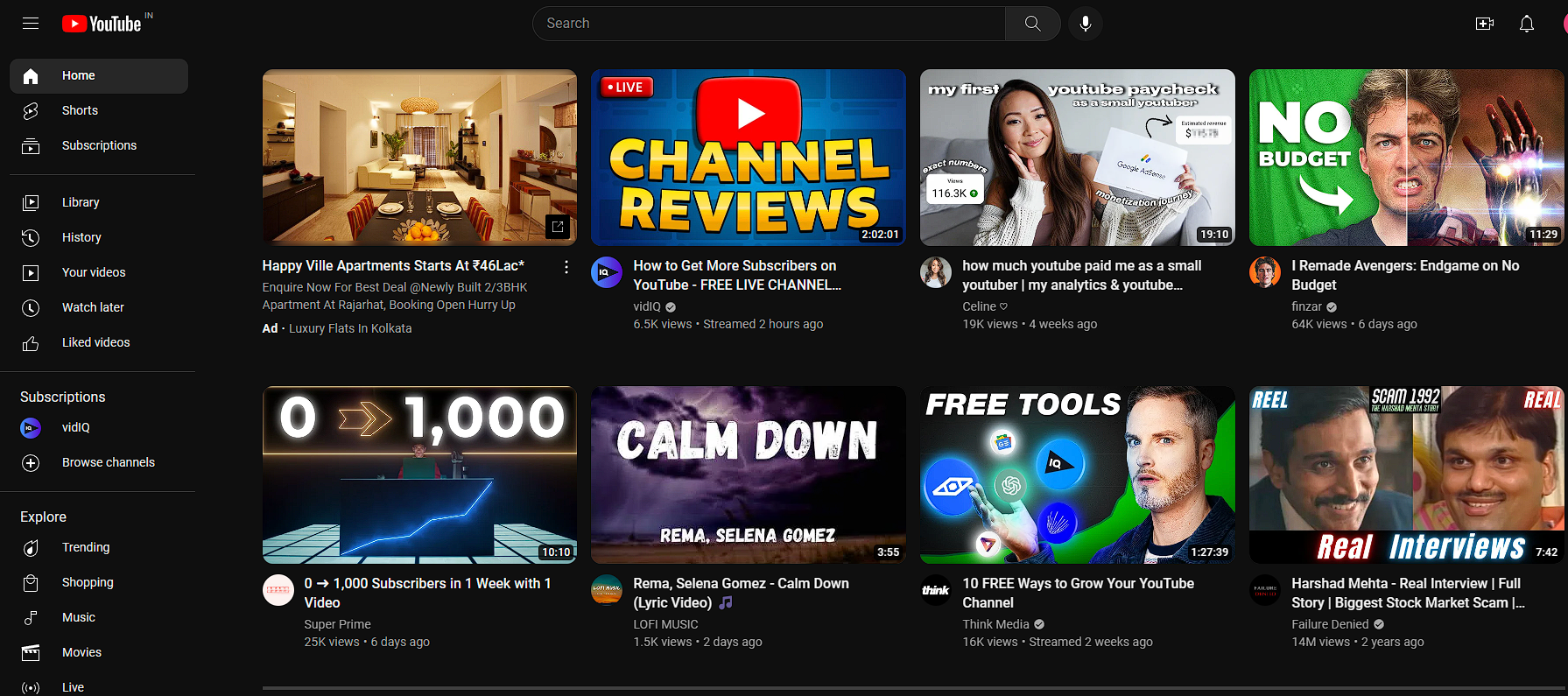
YouTube algorithm tips for Home:
- Make your thumbnail readable on a phone screen
- Front-load your title with the main benefit
- Hook viewers in the first 5 seconds with your core promise
- Create recognizable series so YouTube learns the pattern
New channels CAN appear on Home if packaging and retention are strong. You don't need 100K subscribers. See an example of how a brand new channel developed a niche and gained over 1,000 subscribers in just a few months.
Suggested Videos: The Session Extender
What it is: Videos that appear next to or after the current video
How it works: YouTube recommends videos that relate to what's currently being watched
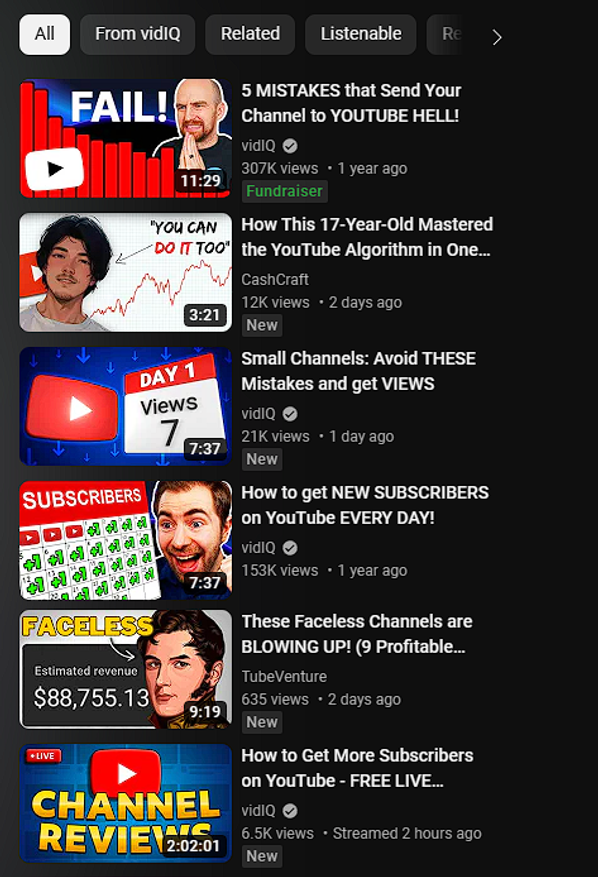
YouTube algorithm tips for Suggested:
- Build a series with consistent thumbnail templates
- Use end screens strategically to guide the next click
- Create content that naturally follows other popular videos
- Comment on and reference bigger creators (join the conversation)
Want to dive deeper into Suggested Videos specifically? Check out our complete guide to cracking YouTube's Suggested Videos algorithm.
Search: The Long-Tail Traffic Source
What it is: Results when someone types a query into YouTube search
How it works: Relevance comes first, then YouTube ranks by satisfaction
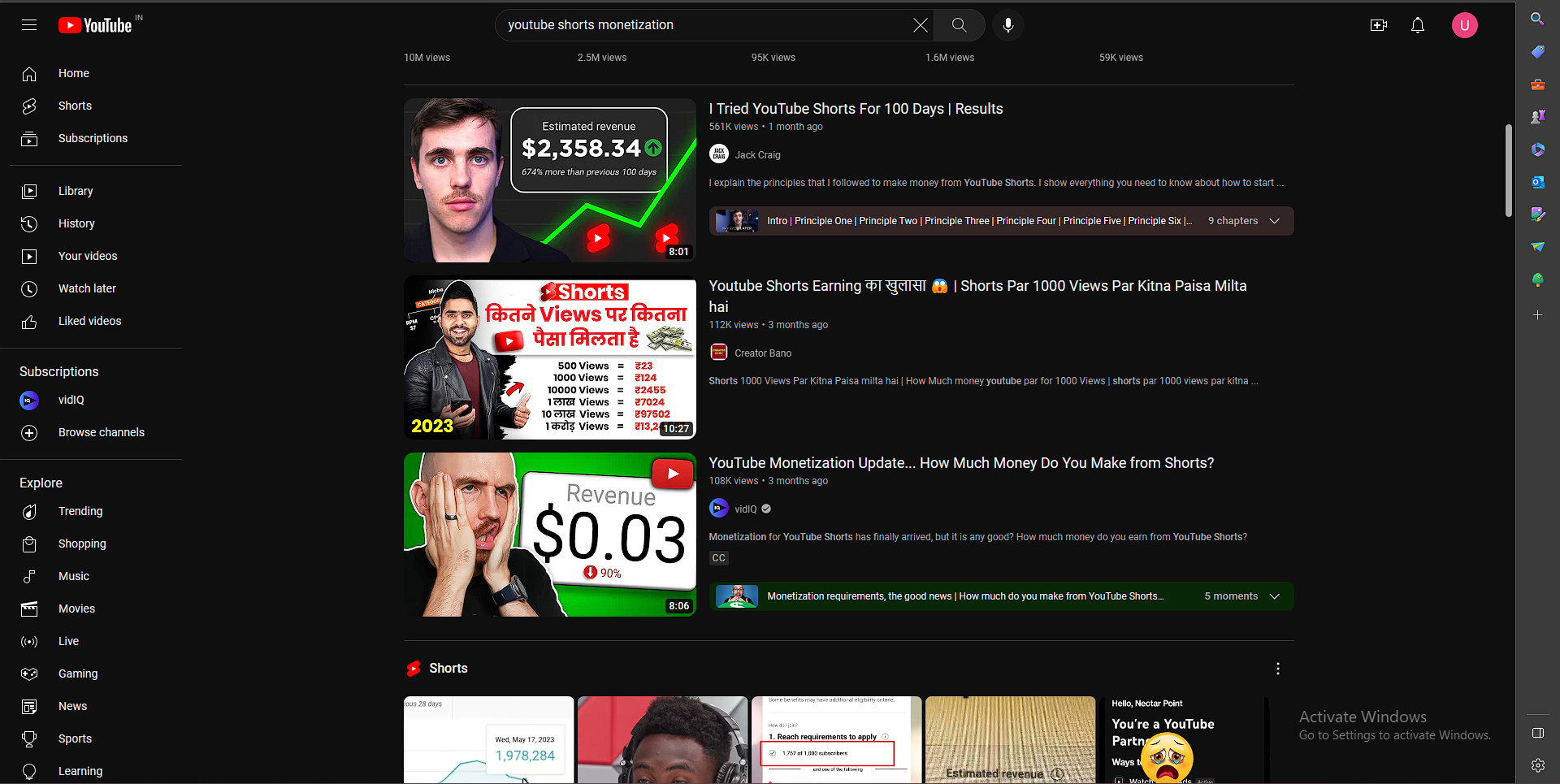
YouTube algorithm tips for Search:
- Put the exact search phrase in your title (naturally, not stuffed)
- Deliver an answer or clear path to the answer in the first 30 seconds
- Add timestamps for longer tutorials
- Optimize description with related terms, not keyword spam
Small channels can outrank big channels in search if their videos better satisfy the query.
Pro Tip: Find trending searches within your niche using vidIQ’s Keyword Generator.
YouTube Algorithm Update 2025: What's Changed
YouTube made several changes that directly impact creators:
Satisfaction Beats Watch Time
YouTube prioritizes viewer happiness over video length. Shorter videos with high retention beat longer videos with low retention. If viewers consistently drop off or click "Not Interested," even high watch time won't save your ranking.
What to do: Cut filler. Make every minute count.
Series Formats Get Priority
Repeat viewing within a topic is a powerful ranking signal. Consistent series help YouTube identify your audience faster. When viewers watch multiple episodes of your series in one session, it tells the algorithm exactly what type of content satisfies them, making future recommendations more accurate and consistent.
What to do: Create 2-3 repeatable series with recognizable branding.
Small Channels Get Tested Faster
The algorithm now tests new creators more aggressively when early signals are strong. In the past, small channels struggled to break through because YouTube needed extensive data before recommending them. Now, if your first few videos show strong CTR and retention with your initial audience, YouTube will test you with broader audiences within days instead of weeks.

What to do: Focus on one niche. Perfect your packaging. Deliver on every promise.
Early CTAs Carry More Weight
Asking for engagement throughout your video works better than waiting until the end. By the time your outro plays, many viewers have already moved on mentally or clicked away to the next video.
What to do: Place your main call-to-action before your conclusion.
Watch to see why the YouTube algorithm knows you so well.
How the YouTube Algorithm Works: The 4-Layer Testing System
When you publish a video, YouTube tests it in expanding circles. Win one layer, unlock the next.

Layer 1: Core Audience Subscribers and regular viewers see it first. Strong CTR and retention here signals YouTube to keep testing.
Layer 2: Recent Viewers People who watched you recently. If they respond well, YouTube expands further.
Layer 3: Topic Matches Viewers who watch your topic but don't know you yet. Clear packaging wins here.
Layer 4: Adjacent Audiences People who watch related topics. This is where videos go viral.
Maintain Your Niche and Serve Your Audience
If your YouTube channel focuses on a clear niche with repeatable formats, your signals compound and your uploads build upon each other.
Practical steps:
- Define your viewer profile. Who are they, what do they care about, and what outcome do they want from your videos
- Build two or three repeatable series. Give each series a consistent promise and thumbnail style
- Use a shared vocabulary in titles so the system and viewers recognize your topics
- Plan a simple cadence you can sustain so each video benefits from the last
Free Template: Get to Know Your Audience
Personalization rewards creators who know exactly who they serve. Win that match by understanding real viewer interests.
Use our worksheet to map core audience, adjacent interests, and the problems they are trying to solve. Then use it to guide titles, thumbnails, and your first 10 seconds. Treat it like a living document that you update as you learn.
YouTube Algorithm Tips: 7-Step Optimization Checklist
Use this checklist before you hit publish:

Step 1: Craft a Clear, Specific Title
Bad: "Amazing Photography Tips You Need to Know" Good: "5 Camera Settings That Fix Blurry Photos (Beginner Tutorial)"
Rules:
- Put the main keyword in the first 40 characters
- Promise one specific outcome
- Avoid vague words like "amazing," "awesome," "incredible"
- Make it scannable on mobile
Step 2: Design a One-Idea Thumbnail
What works:
- High contrast (bright subject, dark background or vice versa)
- One clear focal point
- Readable text (2-4 words maximum)
- Faces with clear emotion tied to the topic
- Simple shapes (no clutter)
What to avoid:
- Duplicating your entire title on the thumbnail
- Using more than 3 colors
- Small text that disappears on mobile
- Generic stock photos
Pro Tip: Use vidIQ's AI Thumbnail Maker to generate multiple design options in seconds. Test 2-3 variations to find what drives the highest CTR.
Step 3: Hook Them in the First 10 Seconds
The formula:
- State the outcome they'll get (5 seconds)
- Show a preview of the result (3 seconds)
- Jump straight into the content (2 seconds)
Example (for a recipe video): "This chocolate cake has 4 ingredients and no eggs. [show finished cake] Here's exactly how to make it. First, preheat your oven to 350°F..."
For more examples, check out 8 proven ways to hook viewers.
What to cut:
- "Hey guys, welcome back to my channel"
- Long intros explaining who you are
- Montages with music before the content starts
Step 4: Use Pattern Breaks Every 20-30 Seconds
What are pattern breaks? Anything that resets attention:
- Camera angle change
- On-screen graphic or text
- B-roll footage
- Quick recap or transition
- Zoom in or zoom out

Why it works: Variety keeps viewers engaged longer
Step 5: Deliver the Promised Outcome
Sounds obvious, but: If your title promises "5 tips," show all 5 tips clearly
Common mistakes:
- Burying the main point 8 minutes into a 10-minute video
- Teasing information without delivering
- Rambling without structure
- Ending abruptly without the payoff
Fix: Outline your video before filming. Mark exactly where each promise gets fulfilled.
Step 6: Ask for Specific Engagement
Weak CTA: "Let me know what you think in the comments!"
Strong CTA: "Which of these 5 tips are you trying first? Drop a number in the comments."
Specific questions get more responses. Ask at the 60-70% mark of your video, not at the end.
Step 7: Guide the Next Click
Use end screens to:
- Link to a related video (creates a session)
- Promote a playlist (bundles your content)
- Suggest the most-viewed video (proven winner)
Use cards to:
- Link to a deeper tutorial mid-video
- Cross-promote related topics
- Direct to a series playlist
Strategy: Treat each video as one step in a viewing journey, not an isolated piece of content
Now that you know the top 7 ways to optimize your content, it’s time to do some research.
Find Videos That Go Viral and Adopt Best Practices
Going viral is not always random. It is a pattern of strong packaging, a tight open, and a payoff that feels worth sharing. You can study it and apply the parts that fit your brand.

Use the vidIQ Outlier tool to find videos in your niche that perform above their channel baseline. Your goal isn’t to flat out copy another creator, it’s to adopt best practices. Keep your personality and your audience in mind. If you see an outlier trend, build your unique version that serves the same viewer needs. Then test two or three angles quickly. Viral videos often come from iteration on a strong idea, not a single lucky upload.
If you want a place to start, build content buckets. Choose three buckets that serve the same viewer from different angles. For example: Tutorials, Reviews, and Case Studies. Rotate through those buckets so your channel feels consistent and varied at the same time.
When you notice momentum, double down. Publish a follow up that deepens the topic. Pin the best comment. Add end screens to tie related videos together. Keep viewers in a focused session that feels guided and helpful.

Your 30-Day Algorithm Optimization Plan
Follow this timeline to improve your channel systematically:
Week 1: Audit Your Current Performance
Action items:
- Check your last 10 videos in YouTube Analytics
- Identify your average CTR (goal: 4%+)
- Note your average view duration (goal: 50%+)
- Find where viewers drop off (usually in first 30 seconds)
- Look for your best-performing video, what made it work?
Pro Tip: Simplify this process using vidIQ’s Channel Audit Tool
Week 2: Fix Your Packaging
Action items:
- Redesign thumbnails for your next 3 videos using the one-idea rule
- Rewrite titles to front-load the main keyword
- A/B test 2-3 title options (change after 48 hours if CTR is low)
- Update descriptions with natural keywords and timestamps
- Create a thumbnail template for your main series
Week 3: Improve Retention
Action items:
- Cut all intros to under 10 seconds
- Script your first 30 seconds to deliver the core promise
- Add one pattern break every 20-30 seconds
- Film tighter (less rambling, more structure)
- End with a clear recap of what they just learned
Week 4: Build Your Session Strategy
Action items:
- Add end screens to your last 10 videos
- Create a "Start Here" playlist for new viewers
- Link related videos in cards at natural transition points
- Pin a comment on each video that adds value
- Plan a series with 3+ videos using consistent branding
After 30 days: Review your analytics. Double down on what's working. Cut what's not.
Download a copy of your 30 day plan here.
Real Example: How One Creator Cracked the YouTube Algorithm
Kyle Searcy transformed his channel, Midnight Prayer Retreat, by learning how to work with, not against, the YouTube algorithm. With guidance from vidIQ Coach Eric, he stopped posting broad motivational content and began creating highly focused videos designed around clear search intent and viewer behavior signals.

By consistently producing long-form “prayer and sleep” videos, Kyle gave the algorithm strong relevance and retention data and viewers started watching longer, engaging more, and returning for similar content. That consistency taught the system exactly who his ideal audience was, allowing YouTube to recommend his videos to the right viewers more often. In just five months, his channel grew from roughly 1.4 K to 16.6 K subscribers.
The Lesson:
Kyle succeeded because he gave YouTube clear signals:
- Relevance: Every video served the same audience
- Satisfaction: Viewers watched for long periods
- Engagement: High CTR and repeat viewing
The algorithm learned exactly who to recommend his videos to, and did it aggressively.
YouTube Algorithm Tips: Common Myths Debunked
Myth: "You need to post daily to grow"
Reality: Consistency beats frequency. One great video per week outperforms seven mediocre videos.
The data: Channels posting 1-2x per week with strong retention grow faster than daily posters with weak retention.
Myth: "Tags are the secret to getting views"
Reality: Tags have minimal impact. Thumbnails, titles, and retention drive 95% of discovery.
Where to focus your time: Spend 2 hours on your thumbnail and 2 minutes on tags, not the reverse.
Myth: "Longer videos always rank better"
Reality: The right length for the idea wins. A 6-minute video that fully answers a question beats a 20-minute video with filler.
The sweet spot: Match length to topic complexity. Tutorial? Go long. Quick tip? Stay short.
Myth: "The algorithm is rigged against small channels"
Reality: Small channels get tested more aggressively than ever if early signals are strong.
Proof: Channels under 1,000 subscribers represent 30% of all new videos in the top 100 of trending topics in niche categories.
Myth: "Never change your title or thumbnail after publishing"
Reality: Strategic iteration is healthy. If your CTR is below 3% after 48 hours, test a new title and/or thumbnail.
Best practice: Make one focused change, wait 24-48 hours, measure, and keep what works. Strategically change your title to capture more search traffic.
Final Thoughts and Action Plan
The YouTube algorithm is not a mystery when you frame it around viewer satisfaction. You control the match between topic, packaging, and delivery. You improve your odds of the algorithm serving your videos with a simple plan and consistently creating content for your core audience.

Action plan checklist
- Improve the first 30 seconds with a specific promise and faster context.
- Tighten titles and thumbnails for one clear idea that matches intent.
- Prompt meaningful engagement that helps the next viewer.
- Use the Audience Worksheet to plan your next five uploads.
- Add chapters, end screen paths, and in-video CTAs that extend sessions.
- Review data after 24 to 48 hours and again after seven days. Keep the changes that lift CTR without hurting retention.
Bonus Tip: Install the vidIQ Extension to see how top creators' title and thumbnail updates affect performance. Apply these insights directly to your own channel.
FAQs
How does the YouTube algorithm work?
It analyzes engagement metrics, user history, content metadata, and feedback signals to match videos to viewers.
How does YouTube recommend videos?
Through predictive modeling: it scores videos based on relevance + performance, and then filters them to users who seem likely to enjoy them.
What’s changed in how YouTube algorithm works in 2025?
In 2025, the algorithm places more weight on user satisfaction, long-term retention, and nuanced feedback (like surveys or sentiment analysis).
Did YouTube change their algorithm recently?
Most likely Yes! YouTube routinely rolls out Algorithm changes, sometimes quietly. In 2025 there’s been a shift toward more personalized metrics.
What’s the YouTube algorithm for views?
“For views” is a legacy notion: nowadays the algorithm values sustained engagement over raw view counts.
How to reset your YouTube algorithm?
You can “reset” by clearing watch history, pausing recommendations, or changing viewing behavior patterns, though results may vary.
Why is the YouTube algorithm explained so opaquely?
Because YouTube guards its models and adapts constantly to prevent gaming; thus many published explanations are informed guesses.
How does the YouTube algorithm rank videos?
It starts small (to your core audience) and expands outward only if the content maintains strong engagement.
20k+ 5 Star Reviews
Ready to put this into action?
Use vidIQ to find your next video idea, pick better keywords, and optimize every upload.

